title page
copyright page
Preface
Contents
Part 1 - Introduction
1 - Power electronic systems
2 - Overview of power semiconductor switches
3 - Review of basic eletrical and magnetic circuit concepts
4 - Computer simulation of power electronic converters and systems
Part 2 - Generic Power and Electronic Converters
5 - Line-frequency diode rectifiers: Line-frequency ac --> uncontrolled dc
6 - Line-frequency phase-controlled rectifiers and inverters: Line-frequency ac <--> controlled dc
7 - dc -- dc switch-mode converters
8 - Switch-mode dc--ac inverters: dc <--> sinusoidal ac
9 - Resonant converters: zero-voltage and/or zero-current switchings
Part 3 - Power Supply Applications
10 - Switching dc power supplies
11 - Power conditioners and uninterruptible power supplies
Part 4 - Motor Drive Applications
12 - Introduction to motor drives
13 - dc motor drives
14 - Induction motor drives
15 - Synchronous motor drives
Part 5 - Other Applications
16 - Residential and industrial applications
17 - Electric utility applications
18 - Optimizing the utility interface with power electronic systems
Part 6 - Semiconductor Devices
19 - Basic semiconductor physics
20 - Power diodes
21 - Bipolar junction transistors
22 - Power mosfets
23 - Thyristors
24 - Gate turno-off thyristors
25 - Insulated gate bipolar transistors
26 - Emerging devices and circuits
Part 7 - Practical Converter Design Considerations
27 - Snubber circuits
28 - Gate and base drive circuits
29 - Component temperature control and heat sinks
30 - Design of magnetic components
CD Contents
Index
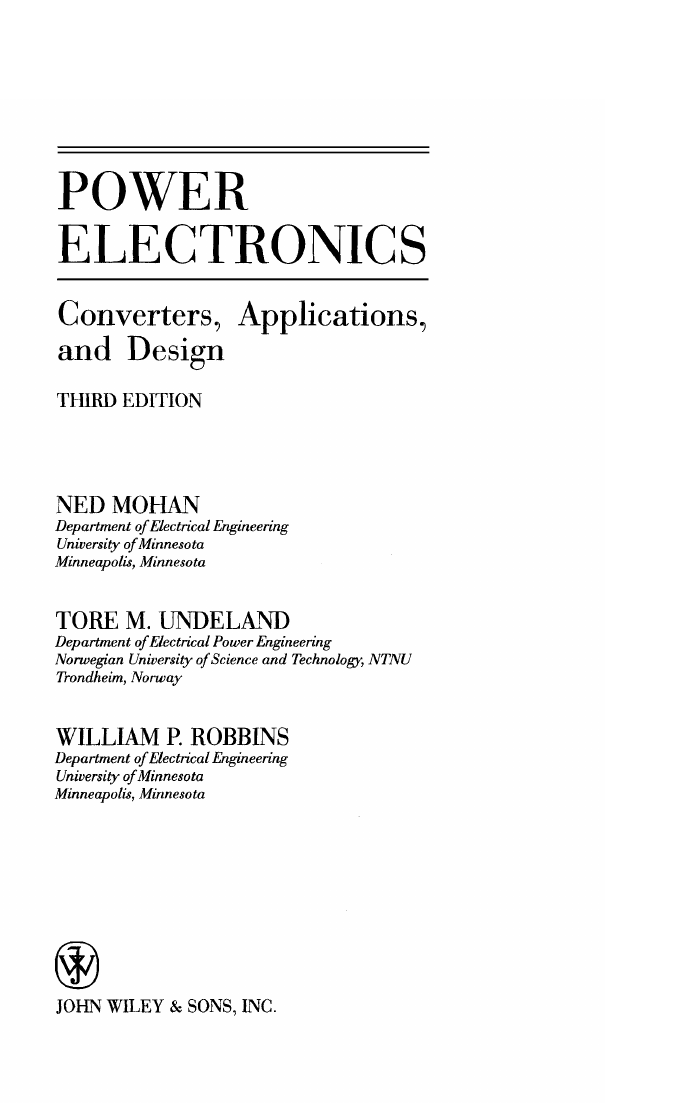
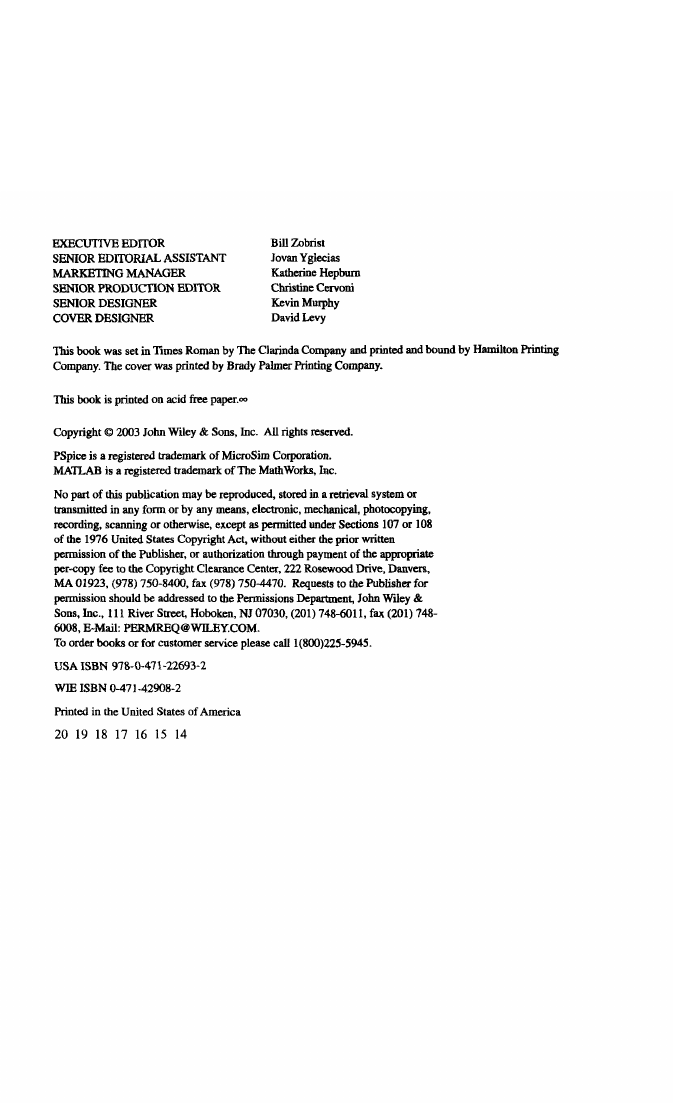
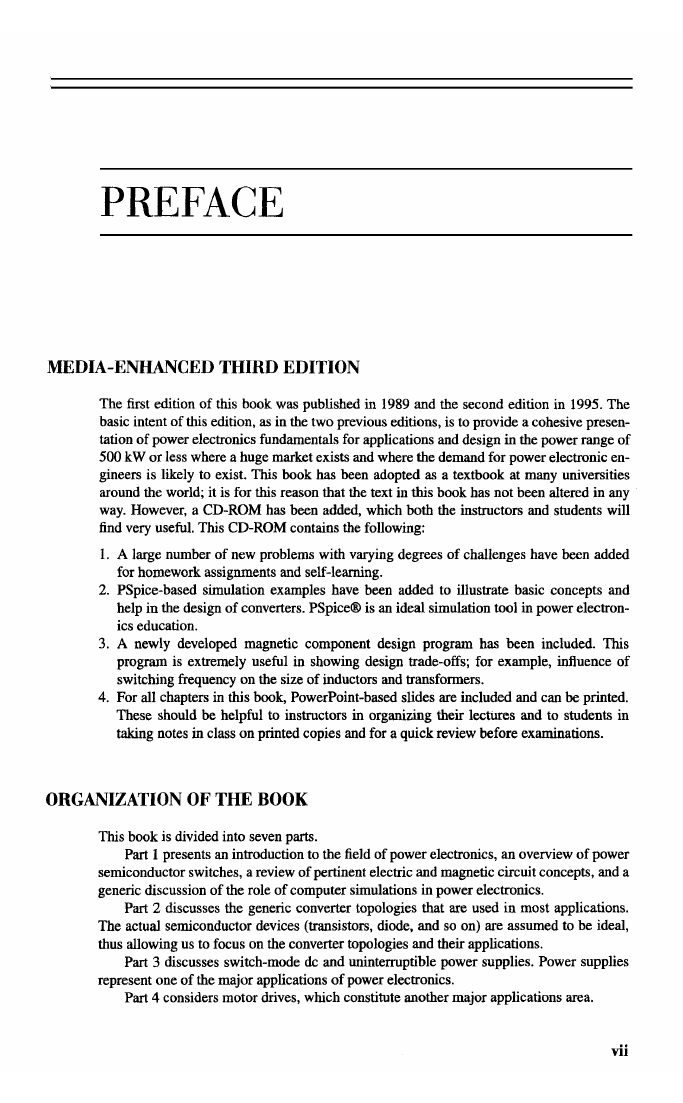
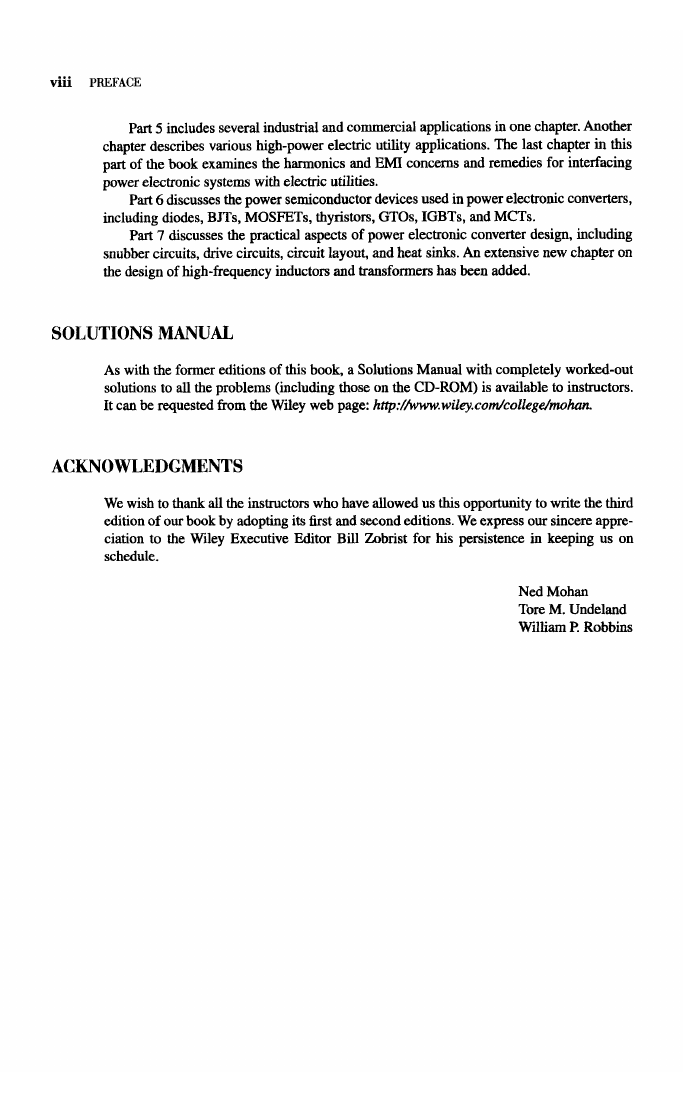
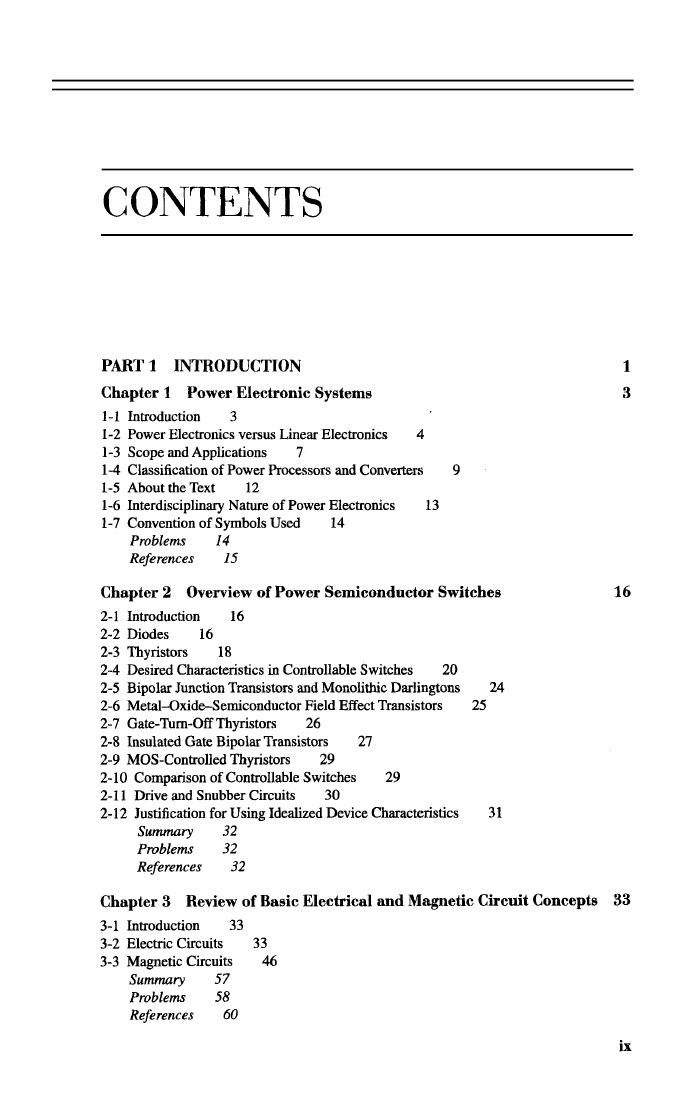
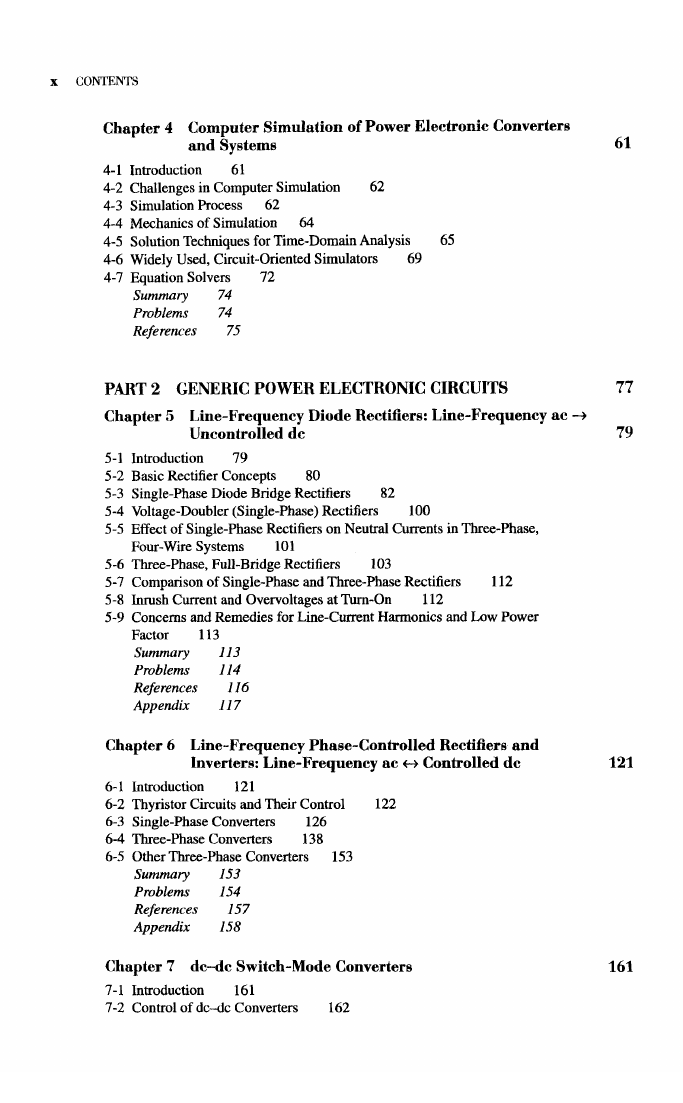
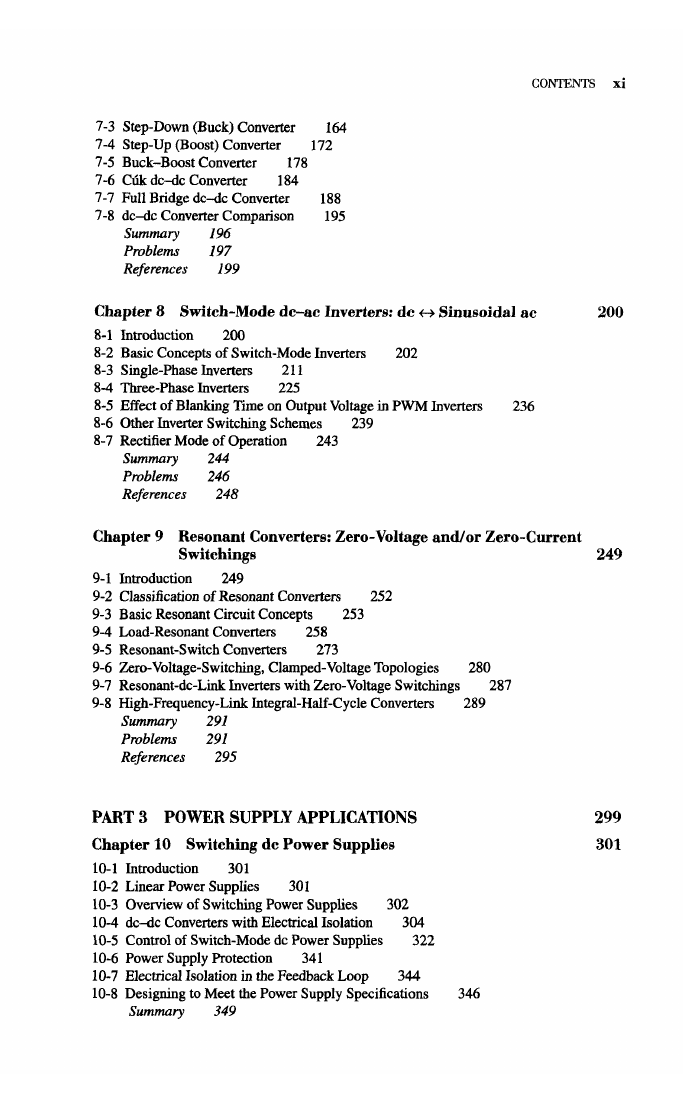
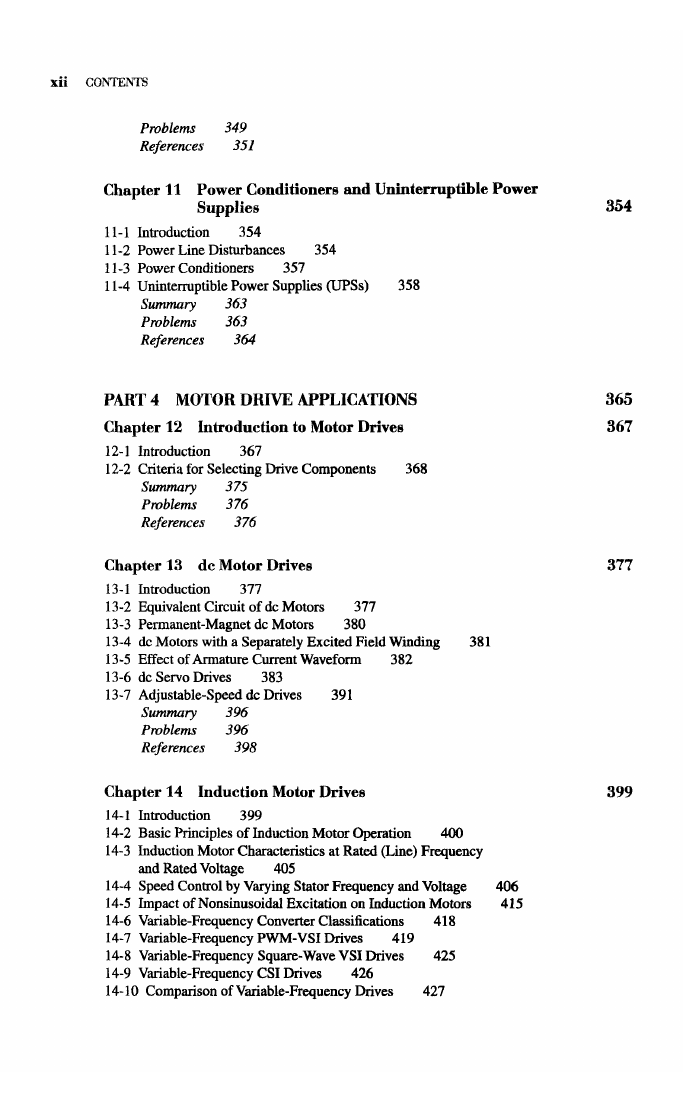








 2023年江西萍乡中考道德与法治真题及答案.doc
2023年江西萍乡中考道德与法治真题及答案.doc 2012年重庆南川中考生物真题及答案.doc
2012年重庆南川中考生物真题及答案.doc 2013年江西师范大学地理学综合及文艺理论基础考研真题.doc
2013年江西师范大学地理学综合及文艺理论基础考研真题.doc 2020年四川甘孜小升初语文真题及答案I卷.doc
2020年四川甘孜小升初语文真题及答案I卷.doc 2020年注册岩土工程师专业基础考试真题及答案.doc
2020年注册岩土工程师专业基础考试真题及答案.doc 2023-2024学年福建省厦门市九年级上学期数学月考试题及答案.doc
2023-2024学年福建省厦门市九年级上学期数学月考试题及答案.doc 2021-2022学年辽宁省沈阳市大东区九年级上学期语文期末试题及答案.doc
2021-2022学年辽宁省沈阳市大东区九年级上学期语文期末试题及答案.doc 2022-2023学年北京东城区初三第一学期物理期末试卷及答案.doc
2022-2023学年北京东城区初三第一学期物理期末试卷及答案.doc 2018上半年江西教师资格初中地理学科知识与教学能力真题及答案.doc
2018上半年江西教师资格初中地理学科知识与教学能力真题及答案.doc 2012年河北国家公务员申论考试真题及答案-省级.doc
2012年河北国家公务员申论考试真题及答案-省级.doc 2020-2021学年江苏省扬州市江都区邵樊片九年级上学期数学第一次质量检测试题及答案.doc
2020-2021学年江苏省扬州市江都区邵樊片九年级上学期数学第一次质量检测试题及答案.doc 2022下半年黑龙江教师资格证中学综合素质真题及答案.doc
2022下半年黑龙江教师资格证中学综合素质真题及答案.doc